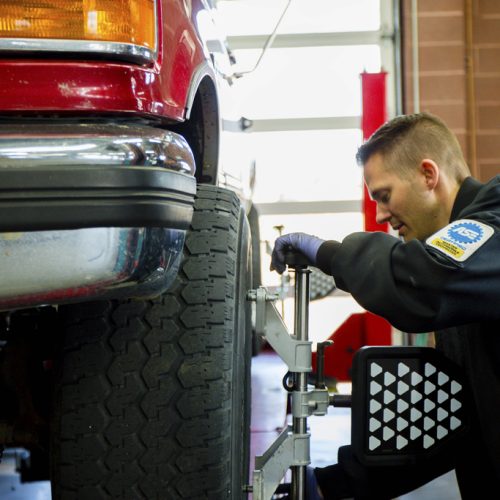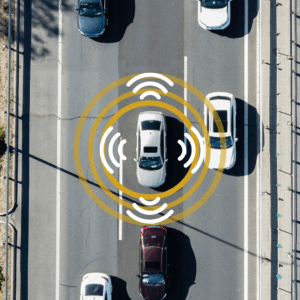You may not notice it right away, but as you get behind the wheel of your vehicle day after day, you will eventually start to realize that something might not be quite right. Your car is drifting from one side to the other, your steering feels off, or the angle of the wheel seems misaligned. All of these could be an indication that your wheel alignment is off center. If your car drifts to one side causing you to turn the steering wheel away from the center position, then you are in need of a car alignment. It could be the result of hitting a deep pothole, a slight hit on a curb while parking, or from that time you slid off the road in bad weather!
On the other hand, you may not notice anything out of the ordinary while driving, but your tires could still be wearing unevenly! Weak springs can cause camber angle problems that can wear the tires on the inside edge. This issue could arise even if the outside edge of your tire looks fine. Worn steering and suspension components can also cause alignment angle problems that you may not notice while driving. Again, these issues could cause uneven tire wear, decreased tire life, and/or lead to safety issues. An example would be when a ball joint has an excessive amount of play, it could cause the tire to wear and come apart, ultimately causing more damage to the vehicle.
Before you head off to a repair shop or service center to have your wheels aligned, it would be a good idea to start by checking your tire’s pressure. Underinflated tires may also cause a vehicle’s steering to pull to one side, so be sure and eliminate that possibility first! Second, you should inspect your tires to see if there are any visible signs of uneven tire wear, such as tread being worn off along the edges. However, it can be hard to distinguish normal from excessive wear, so unless you’re confident in the art of “tireology,” don’t go jumpin’ to any conclusions just yet!
We recommend turning your front wheels out to the side, so that you can see the full tread of the tire. The “Penny Trick” can help you measure the depth of the tire tread. To do this, use a penny with Lincoln’s head and turn it upside down in the tread. If you can see all of Lincoln’s head, you have very little tread left, and it may be time for some new tires so that you have the traction you need for safety.
Another thing to note is that vibrations in your wheels can be different from car alignment problems. Vibrations could be caused by tires being out of balance or having a bent wheel (potholes can do that), or even because parts of the suspension are worn. When this problem arises, getting your wheels aligned won’t solve the vibration problem.
Alignment specifications differ by vehicle and circumstance, so taking it to a qualified technician for a diagnosis can be far more beneficial than trying to guess. Depending on the vehicle, proper wheel alignment involves measuring the camber (inward or outward tilt of the wheels when looking head on), caster (wheel tilt front or back looking from the side), and toe-in or toe-out (looking down at the wheels from above), then adjusting those suspension components. These are measured in fractions of an inch or degrees that require specialized alignment equipment.
With all the advances in technology today, it’s easy to see that a lot has changed since grandpa Joe bought his first Cadillac! Because of this innovation, maintaining the ride and performance of these modern vehicles is super important. A proper alignment on these vehicles require the rear wheels alignment angles to be checked and corrected. There’s more vehicle variety on the road these days, too! Vehicles have many different purposes, and those specific purposes embody different features like having rear steering capabilities, stability controls, or SAS (Steering Angle Sensors).
Every car manufacturer is unique and requires different methods to adjust their model’s system. Unlike your typical maintenance requirements, wheel alignments aren’t usually listed on the recommended maintenance schedule. This makes determining how often you should get a car alignment an open-ended question, or on a “need be” basis.
Even if your vehicle tracks as straight as an arrow, that does not mean your wheels are properly aligned. We have had many customers who had no complaint about an alignment problem, and their tires were worn badly. It is a good idea to have your alignment checked annually.
We recommend getting the car alignment checked after you’ve had your tires rotated, bought and installed new tires (so they don’t immediately start to wear unevenly), or if you know you have had an impact with a curb. Alignments can help save you money in the long run by extending the life of your tires!




